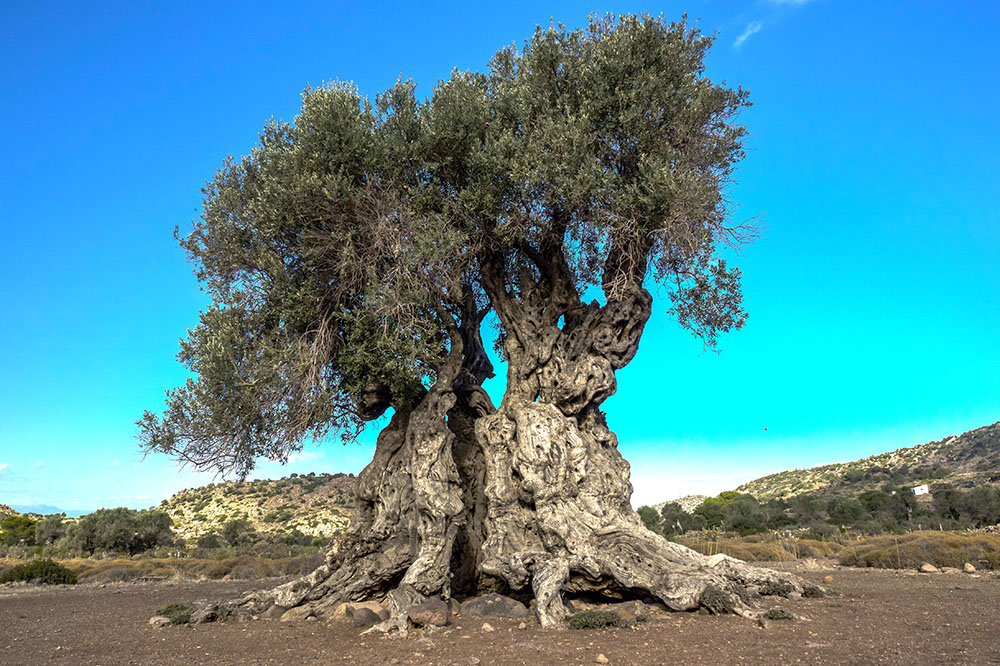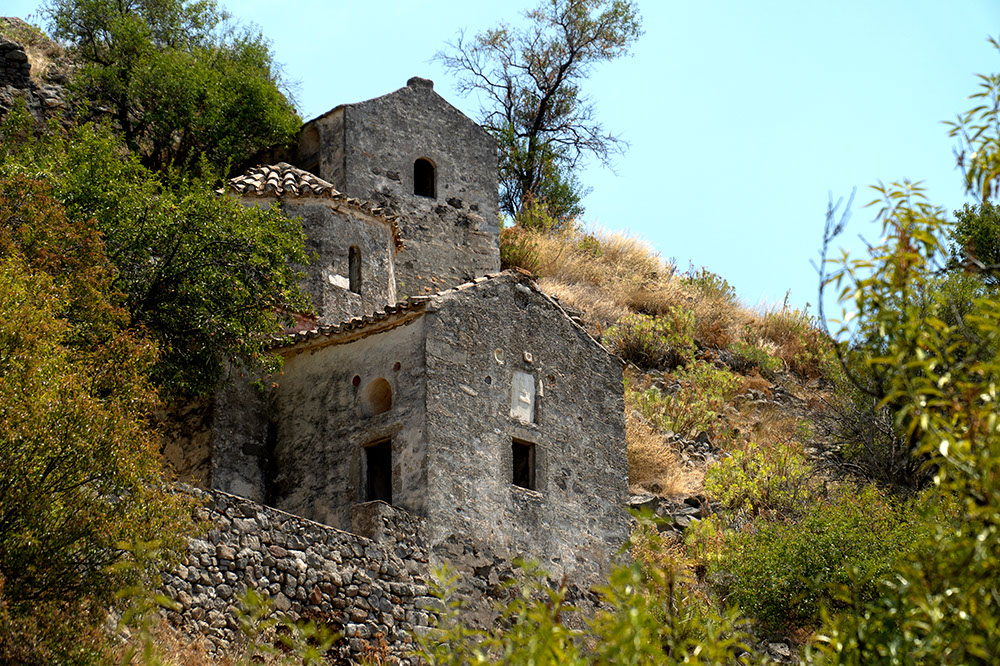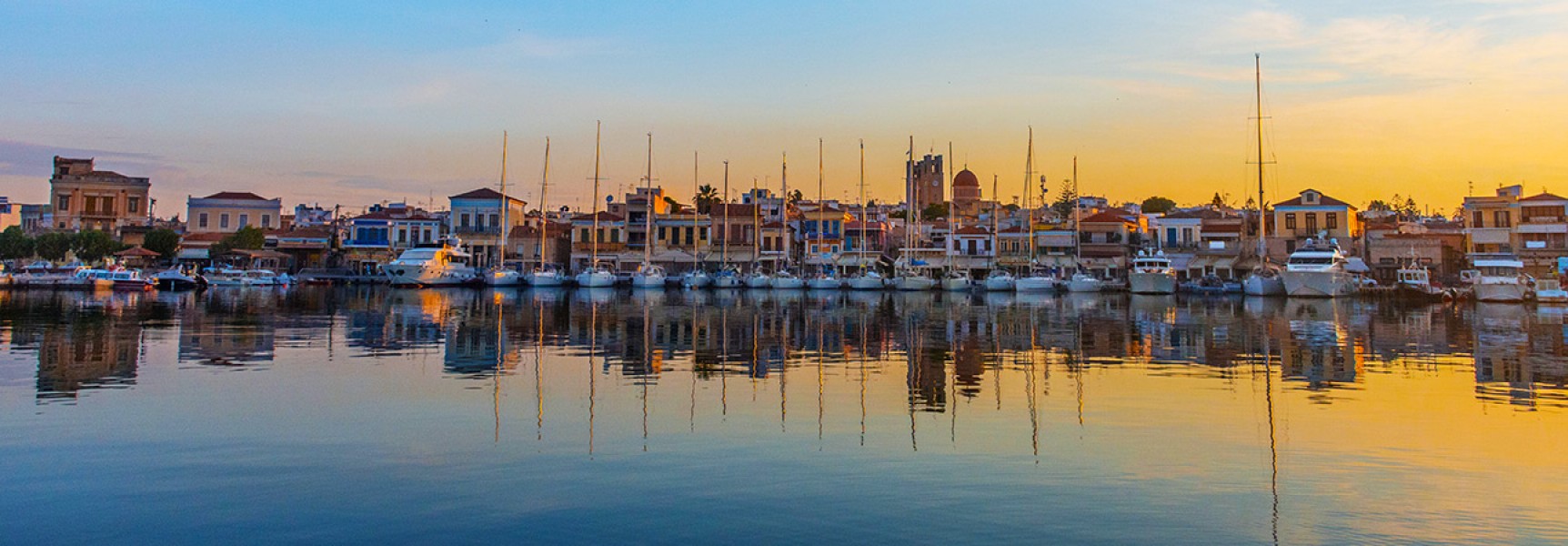Aegina. A real gem of the Saronic Gulf
A few nautical miles separate Aegina from Piraeus and a journey of only thirty-five minutes, making it, in essence, an island suburb of Athens. And yet! The trip to the island is like a leap in time, with the ally of the rich history and the remarkable cultural identity of the island and is accompanied by the promise of a truly unique experience that tempts every visitor to stay there forever.
In the center of the Saronic Gulf, Aegina stands out, with its rich history and its important archaeological monuments, such as the temple of Aphaia and the medieval ruins in Paleochora, also known as the "island" Mystras. At the same time, the pebbles and the golden sand of its beautiful beaches, alternate with the mountain lures of Aegina, on the beautiful slopes of the Greek mountains, among pines, pistachios and traditional settlements, while in Chora of the island, the beautiful neoclassical mansions and choices in accommodation, food and entertainment, fully justify the characterization of Aegina, as one of the most beloved destinations of the Athenians and not only, throughout the year.
In Aegina, the island where the alternations and beauties have no end, let us discover together, those reasons, for which Aegina is a real gem of natural beauty and an inexhaustible travel canvas, full of surprises, that fascinate everyone.

Let’s meet in Chora
The city of Aegina combines the island aura of the Saronic Gulf with the magnificent architectural features of its houses, thanks to the so-called "national houses", built during the period after national independence and beautified the city when it was declared the first capital of Greece. These are well-preserved mansions, which incorporate in their architectural appearance refined decorative motifs, which give the buildings a special identity and undeniable elegance and grace. The historical memory is indelibly imprinted on the walls of public buildings, which compose the residential canvas of the city. The Government stands out with its refined look, one of the most historic buildings of the newly formed Greek state, the Einardio School, which was a kind of Pedagogical Academy of that time, the Orphanage, the building of the Historical and Folklore Museum, the Metropolis of Aegina, created by Ionian craftsmen and a church dedicated to the Assumption of the Virgin Mary, to Agios Dionysios and Agios Spyridon. And all this, next to busy streets, shady squares, cafes, taverns and picturesque patisseries, which stand out for their elegance, as they spread along the entire coastal road, enticing the visitor into the hospitable embrace of the city.
Top sights
Column
At a distance of 200 m from the pier, where ships dock, in the port of Aegina, extends the archaeological site of the Column. It took its name from the Venetian sailors, who used, as their orientation point, the columns of the archaic, Doric temple of Apollo, which existed at the site. The prehistoric settlement, developed on the hill of the area, flourished in the Bronze Age (around 2,500 BC), while, later, the area often changed uses and functions, due to the many conquerors found on the island, during the passage of centuries. From the excavations that have taken place today in the area, the remains of the prehistoric settlements and the temple of Apollo are visible, as well as parts of the walls, from different historical periods. At sea, below the hill, there are traces of the war port of ancient times, (Crypto Port), which played a leading role in the naval history of the island and made Aegina, as a significant force, in its heyday. Most of the excavation findings are on display today in the rooms of the Archaeological Museum of the island and are extremely impressive.
The temple of Aphaia

For many researchers it is considered one of the most important energy points in Greece, contributing, decisively, to the formulation of theories about the creation of an imaginary isosceles triangle, with the Acropolis and the temple of Poseidon in Sounio. The temple of Aphaia is located on the northeast side of the island, near Agia Marina, on a hill, surrounded by pine trees. The beautiful natural environment creates a sense of peace and unbridled respect, in one of the most important archaeological sites in Greece, while, without a doubt, the attention is gathered to the famous church, thanks to the excellent condition in which it is preserved. The temple is a typical example of Doric architecture of the classical period, dedicated by the islanders to Aphaia, the local deity, who was later identified with Athena. The temple preserves a large number of columns, while it was known for the masterpiece sculptures that adorned its pediments and depicted the feats of Aeginian heroes, who were distinguished in the Trojan War. Today, the original works are on display at the Sculpture Gallery in Munich.
Paleochora

Paleochora, the old capital of the island, is an equally important attraction, located opposite the shrine of St. Nektarios. Archaeologists believe that in this place was the ancient city of Aegina, called Oii. The inhabitants settled there, in order to avoid the pirate raids of the corsairs and remained in the area, until the beginning of the 19th century, when the dangers of raids had passed and the coastal settlement of the present city of Aegina, with its port, developed. Gradually, the abandonment took place in Paleochora and, today, there are more than 30 basilica-style churches left, with exceptional frescoes, all samples of high ecclesiastical art.
Saint Nektarios

About in the middle of the route, from the port of Chora to Agia Marina, is the monastery of Agia Triada-Agios Nektarios, founded in 1910, in the ruins of a Byzantine monastery, where the relics of Agios Nektarios, patron saint of Aegina, are preserved. The modern church is one of the largest shrines in Greece and one of the largest Orthodox churches in the world. The temple is extremely impressive due to its imposing dimensions, which make it stand out in the landscape, while the valuable church treasures, which it hosts inside, attract the interest of thousands of visitors from around the world.
Beaches. Dives until October and beyond

Aegina is an island full of beaches of astonishing beauty. Spread along the coastline, the beaches of the island are characterized by their shallow, crystal clear waters, which remain warm, for sure, until October. Easily accessible, due to the satisfactory road network of the island and with most of them, well organized and with many facilities, the beaches of Aegina can guarantee moments of endless travel enjoyment, in their clear blue waters and glistening sandy beaches. Small coves and creeks, literally "drowned" in the green, offer unique moments of isolation and tranquility, in a natural landscape, which seems to have sprung from the canvas of a great artist. From the beaches in Avra and Column, the sandy beach of Panagitsa and the organized beaches in Agios Vassilis, Marathon, Aeginitissa, Klima and Kamares, among others, minds and senses manage to escape, in an unprecedented environment of unspeakable peace and carefree, giving to everyone, a unique experience that will put, once and for all, Aegina, in the heart of everyone.













